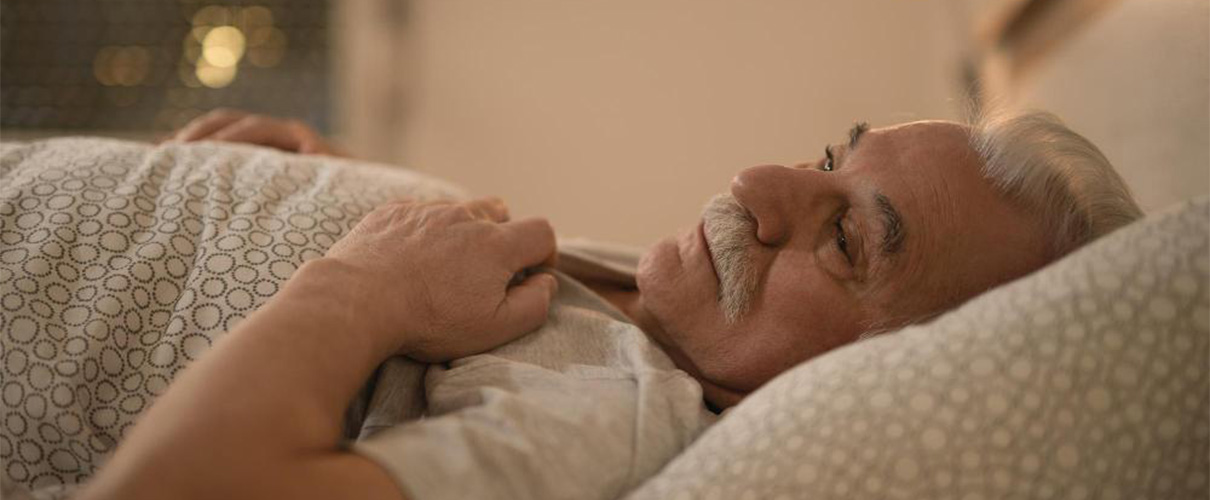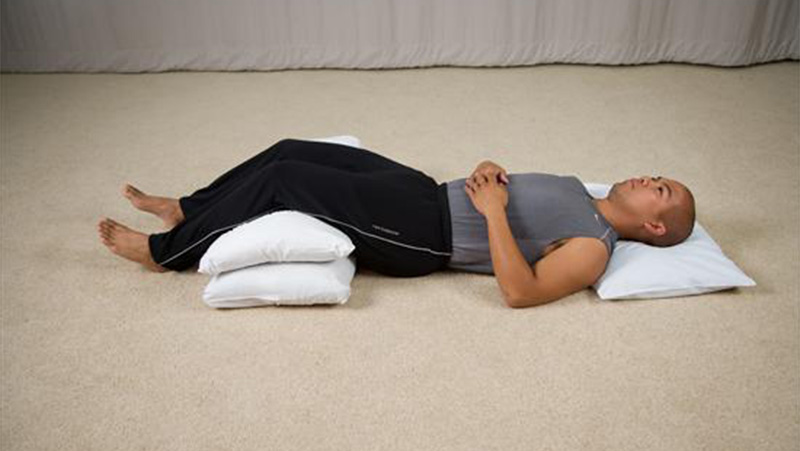Do you often wake up with an aching or numb leg? A good night's sleep can be difficult for one dealing with Peripheral Artery Disease also known as PAD. The discomfort and pain caused can make it really challenging to find the right sleeping position.
You will be surprised to know how sleeping positions can greatly affect the health of people with Peripheral Artery Disease. Managing PAD not only requires lifestyle adjustments and medical attention but also correct sleeping positions. How you sleep plays a vital role in promoting ease and comfort.
We all know how crucial is good quality sleep, especially for those managing PAD. A recent study shows that sleeping for less than 5-6 hours per night increases the risk of developing PAD by 74%. Professionals claim that Peripheral Artery Disease has impacted more than 6.5 million Americans who are over the age of 40. Shocking right?
But, worry not, we have your back. Here we will explore the best sleeping position for Peripheral Artery Disease to enhance your peaceful night's sleep.
So, What Is Peripheral Artery Disease?
Before we dive into the sleeping position that suits you best for Peripheral Artery Disease it is important to understand what PAD actually is. It often occurs due to the build-up of fatty substances (Plaque) in the arteries, usually in the legs. This further narrows down the blood vessels restricting the flow of blood to the limbs causing extreme pain, cramping, and discomfort, especially during physical activity, or when you are trying to get some nap.
Symptoms of PAD
The symptoms of Peripheral Artery Disease can vary from mild to extreme leading to the following:-
- Leg pain
- Poor healing of wounds
- Cold feet
- Numbness in leg and feet
- Pain around toenail
- Change of skin tone around the feet and leg
Leading Causes of PAD
- Age
- Fatigue
- Smoking
- High blood pressure
- Diabetes
- High cholesterol
Sleeping Position & Peripheral Artery Disease: The Interconnection

By now we already know the importance of a righteous night's sleep. But, do you know why sleeping in the correct position is so important when you have PAD? The way you lie down can affect the movement of blood in your limbs. For instance, think of how bending a pipe can affect the movement of water. However, sleeping in the correct position can help the blood flow smoothly without bothering your sound sleep.
A good sleep doesn't only mean having a beautiful dream. It is actually when your body gets the right amount of time to fix itself. Therefore finding the best position while sleeping isn't just comfortable but also ideal for saying goodbye to PAD discomforts.
Best Sleeping Position for Peripheral Artery Disease

Finding the perfect comfort zone while sleeping can be the task for the day with PAD. So, let's have a look at what experts have to say when it comes to finding the best sleeping position for ones with PAD.
Lying on Your Back While Sleeping
Well, studies show sleeping on your back helps spread your weight evenly, creating less pressure on the blood vessels causing distress. This position also supports the natural elevation of your limbs, promoting better circulation.
If you add pillows to lift your legs more, it gives additional support to your lower back.
Elevating Your Legs
Try raising your legs a bit above your heart level while sleeping to avoid clotting of blood in your legs. Pooling of blood can cause swelling and pain.
Having an adjustable bed makes it easy – you just have to lift the leg section. But if not then there’s nothing to stress about, you only need to grab a few pillows. Put as many as needed under your legs until they're comfy and above heart level.
This helps in better circulation of blood and also releases muscle tension by taking off the pressure. So, if you face swelling or aches during the day, elevating your legs is the best sleep position to go for.
Side Sleeping
If elevating your legs inst helping then the next best sleeping position is to lie on your sides. Try not to curl up with your legs tucked close to your chest forming a fetal position, this can block blood flow. Instead, try keeping your legs straight and in line with your body.
If you find it difficult to naturally achieve this position, try using a pillow in between your knees. This helps your legs to stay aligned and release pressure on your hips.
Keep Away from Sleeping on Your Stomach
Try to avoid sleeping on your stomach with PAD. Firstly, sleeping on your stomach creates an imbalance between your heart and leg levels. This restricts the blood flow resulting in swelling and pain. Secondly, stomach sleeping can put too much pressure on your neck and spine, also leading to discomfort and poor blood flow.
Here's a trick for you to follow: if you have a habit of sleeping on your stomach, try placing pillows or extra blankets on each side of your body to stop you from rolling onto your stomach during sleep.
Getting Good Pillows and mattresses
Getting a good mattress and pillows can really make a huge difference for people with PAD. Consider investing in quality ones, like cotton side sleeper pillows. They give specific support, for quick relief from pressure.
Tips to Get Better Night Sleep
Here are a few simple tips for better sleep with peripheral artery disease:
- Keep your bedroom warm to avoid narrowing blood vessels.
- Don't cross your legs, as it hampers blood flow and worsens PAD symptoms.
- Try going for mild walks.
- Try deep breathing, relaxing exercise, or gentle stretching to reduce stress.
When to Consult a Medical Professional

Knowing when to call the doctor is crucial. If you're dealing with PAD, watch out for some serious symptoms. If you see a change in the color or get extremely cold feet, don't wait. Remember these can be big warning signs!
Opting for the best sleeping position for peripheral artery disease can be of great use, but talking to your doctor is a must. Also, PAD doesn't just disappear like that, so getting your treatments and check-ups on time will help you in the long run!
Get a Comfortable Sleep Regardless of PAD with Eli & Elm
If you've got Peripheral Artery Disease, know that there are millions out there facing the same thing. We at Eli & Elm very well understand how you feel about getting some snoozing time. Therefore we have got you highly recommended side sleeper pillows and comforters that will help you address your PAD sleeping issues with ease.
So why wait, Contact us now!
Sources:
MINT: Best Sleeping Position for Peripheral Artery Disease – What You Need To Know .
WebMD: Peripheral Artery Disease (PAD) and Sleep
Marham: Peripheral Artery Disease: Best Sleeping Position for Your Well-Being
Podiatry Today: What is the Link Between Sleep and PAD?
Medium: The Best Sleeping Positions for Managing Peripheral Artery Disease
Wow Health: Peripheral Artery Disease: What is the Best Sleeping Position for Your Well-Being?












